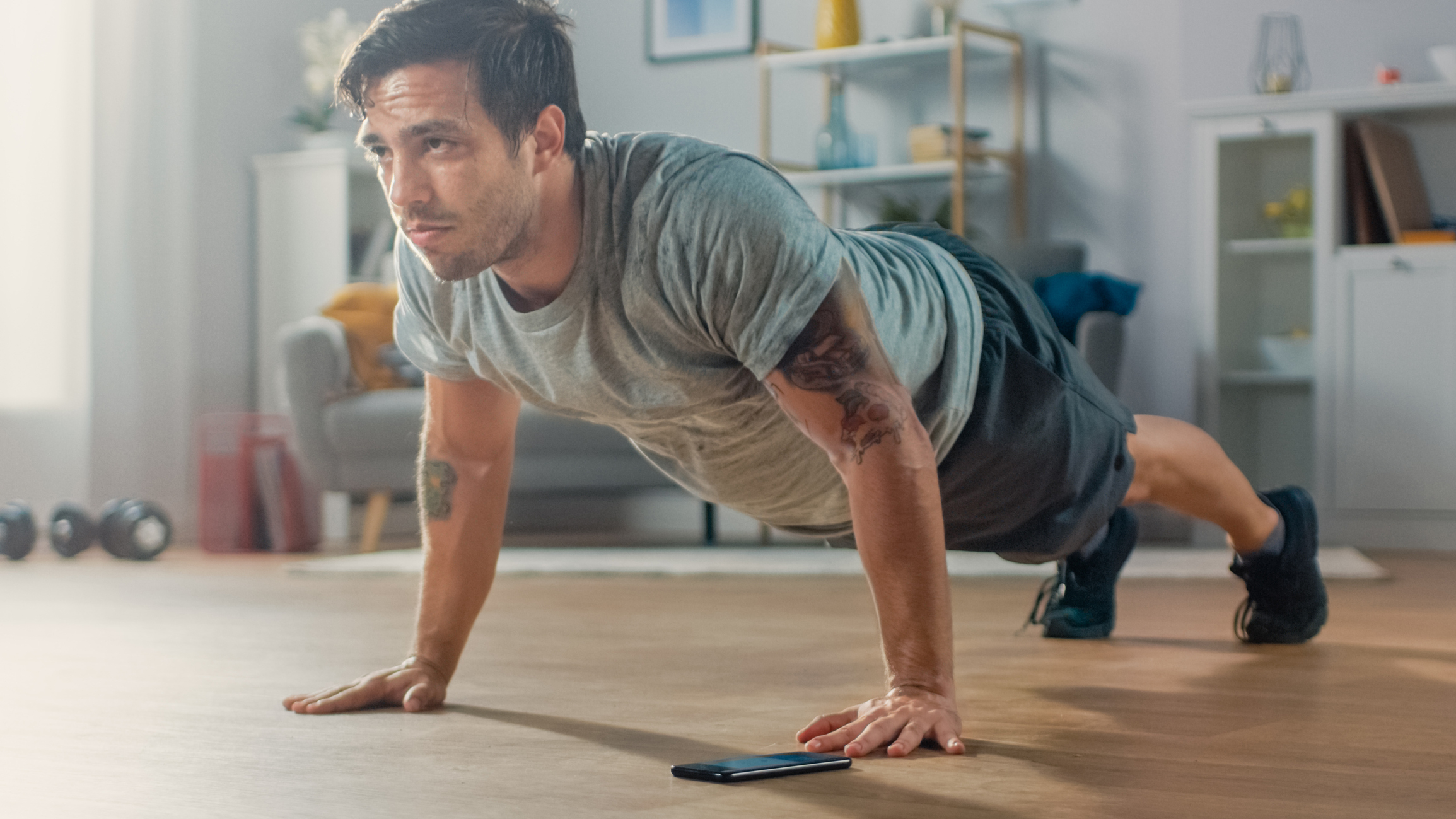
Strength training is one of the best things you can do for your health, and you don't need weights to get started. This seven-move routine will work your entire body without any equipment, helping you to build muscle and boost your metabolism.
The workout was created by Sally Moss, a strength coach and founder of training company Strength Ambassadors.
"You will be strengthening areas that are often weak, such as the upper back, core and hip muscles," she tells Fit&Well.
"This workout will also raise your heart rate, so you will be getting fitter and burning calories, as well as getting stronger."
How to do strength coach Sally Moss's seven-move workout
Most of Moss's workout follows a superset format, grouping exercises together to be performed back-to-back.
Each of the exercises below is labeled with a number and a letter. For superset one, perform exercises 1A and 1B back to back with no rest in between, then take 60 seconds to catch your breath before repeating. After you've finished two rounds of this, do the same for exercises 2A and 2B.
For the final three-move circuit, start a running clock and perform the exercises back to back, resting as little as possible between each one. Complete as many rounds of this circuit as you can in five minutes.
- 1A. Push-up
- 1B. Split squat
- 2A. Single-leg Romanian deadlift
- 2B. Superman
- 3A. Side plank dips
- 3B. Single-leg glute bridge
- 3C. Squat
1A. Push-up
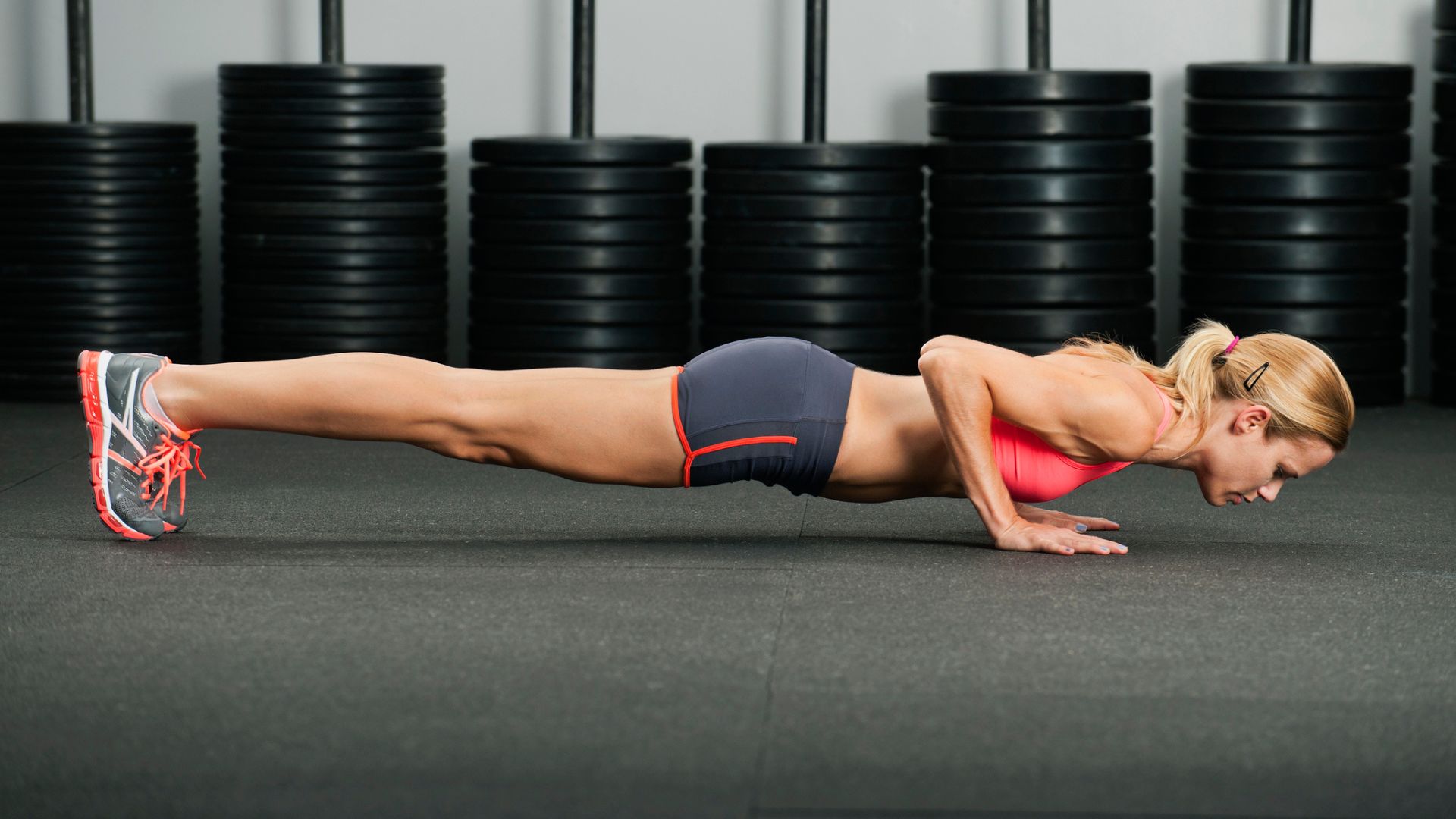
Sets: 2 Reps: 10
- Start in a high plank position with your weight spread evenly between your hands and toes. Your hands should be directly beneath your elbows and your legs and back should form a straight line.
- Keeping your core tight and your elbows tucked into your sides, bend your arms to lower your chest towards the floor.
- When your chest is less than an inch from the ground, push through your hands to return to the starting position.
Modification: If this exercise feels too difficult for 10 repetitions, lower your knees to the floor or place your hands on an elevated surface to make it slightly easier.
1B. Split squat
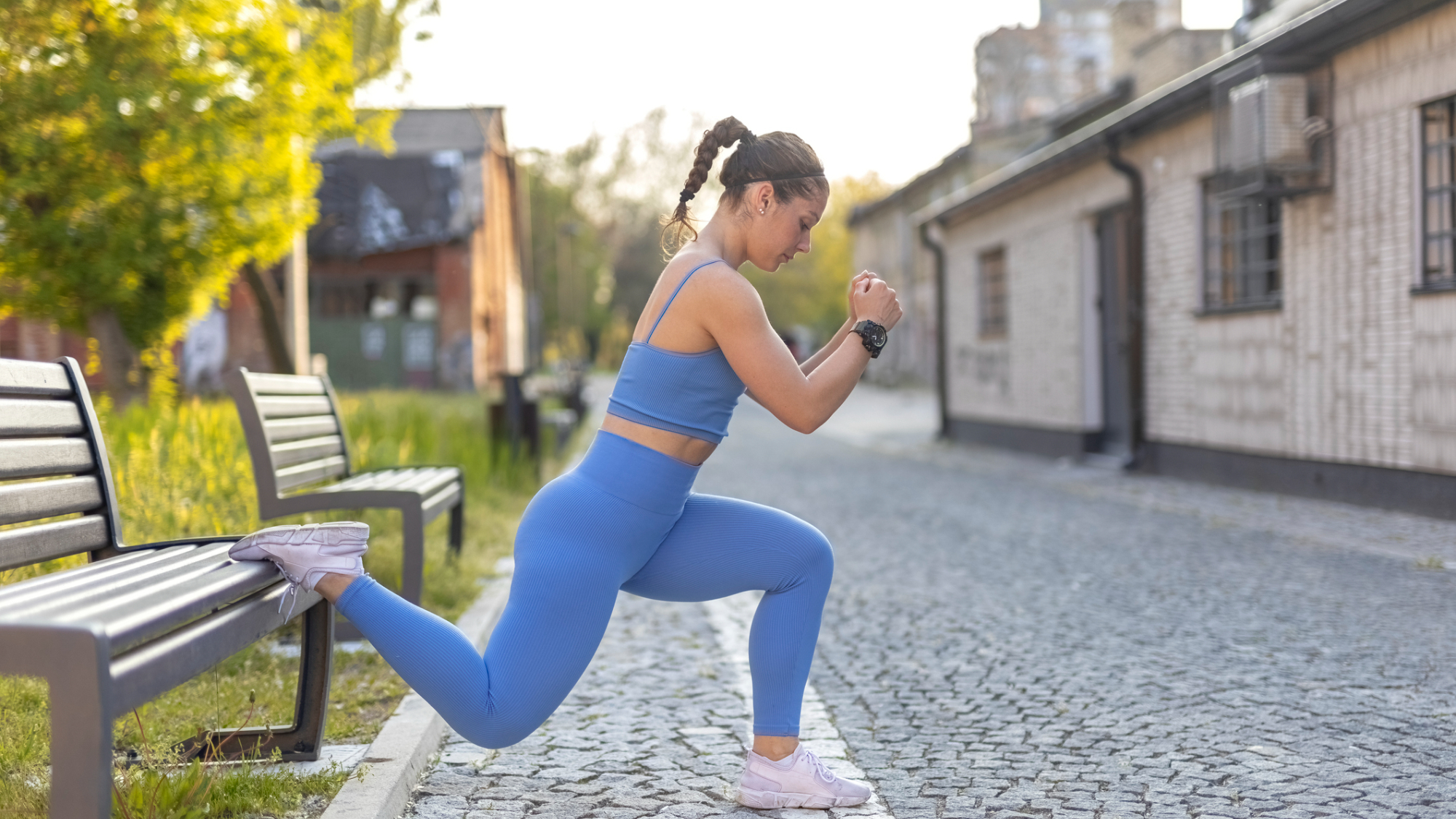
Sets: 2 Reps: 10 on each leg
- Stand one stride in front of a sturdy surface like a chair, box or weight bench. Reach your left leg back to place the bottom of your left foot on top of this sturdy surface.
- Leaning forwards slightly, but keeping a flat back, bend your right knee to lower your left knee to just above the ground.
- Drive through your right foot to return to the starting position.
Modification: If you own weights and want to progress this exercise, hold a dumbbell or kettlebell in either hand while doing it. You can also slow it down, taking three seconds to lower your back knee towards the ground.
2A. Single-leg Romanian deadlift
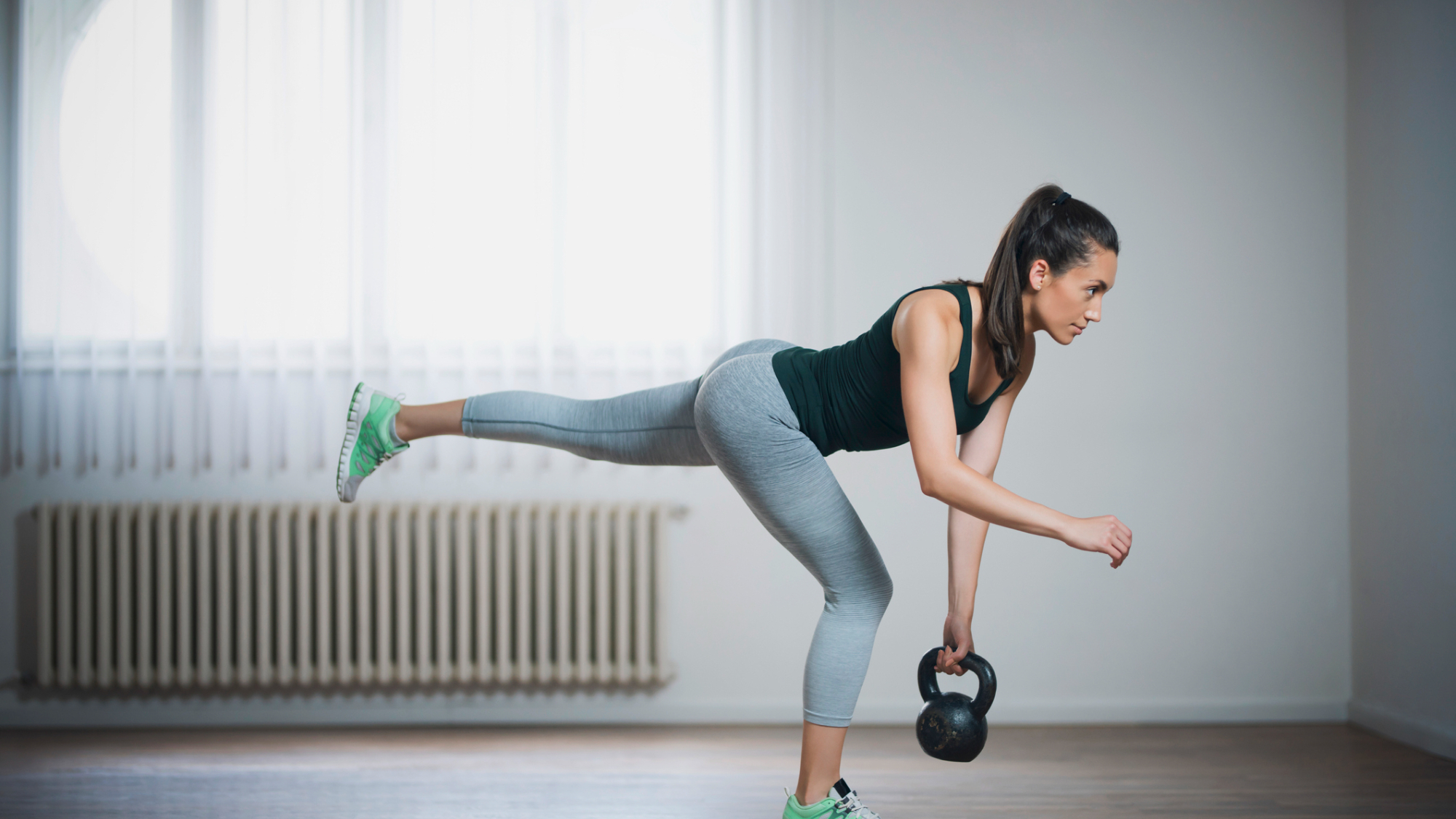
Sets: 2 Reps: 5 on each leg
- Start in a staggered stance with your feet hip-width apart and your right foot about a foot in front of your left.
- With a slight bend in your right knee and a flat back, lower your hands towards the floor. As you do this, allow your left leg to lift up behind you to help you balance.
- Lower your hands as far towards the ground as your hamstrings (the muscles on the back of your thighs) allow, then squeeze your glutes to return to the starting position. Repeat for the prescribed number of repetitions, then switch sides and go again.
Modification: To make this exercise easier, keep the toe of your back foot touching the ground for balance. To make it more difficult, hold a dumbbell in each hand.
2B. Superman
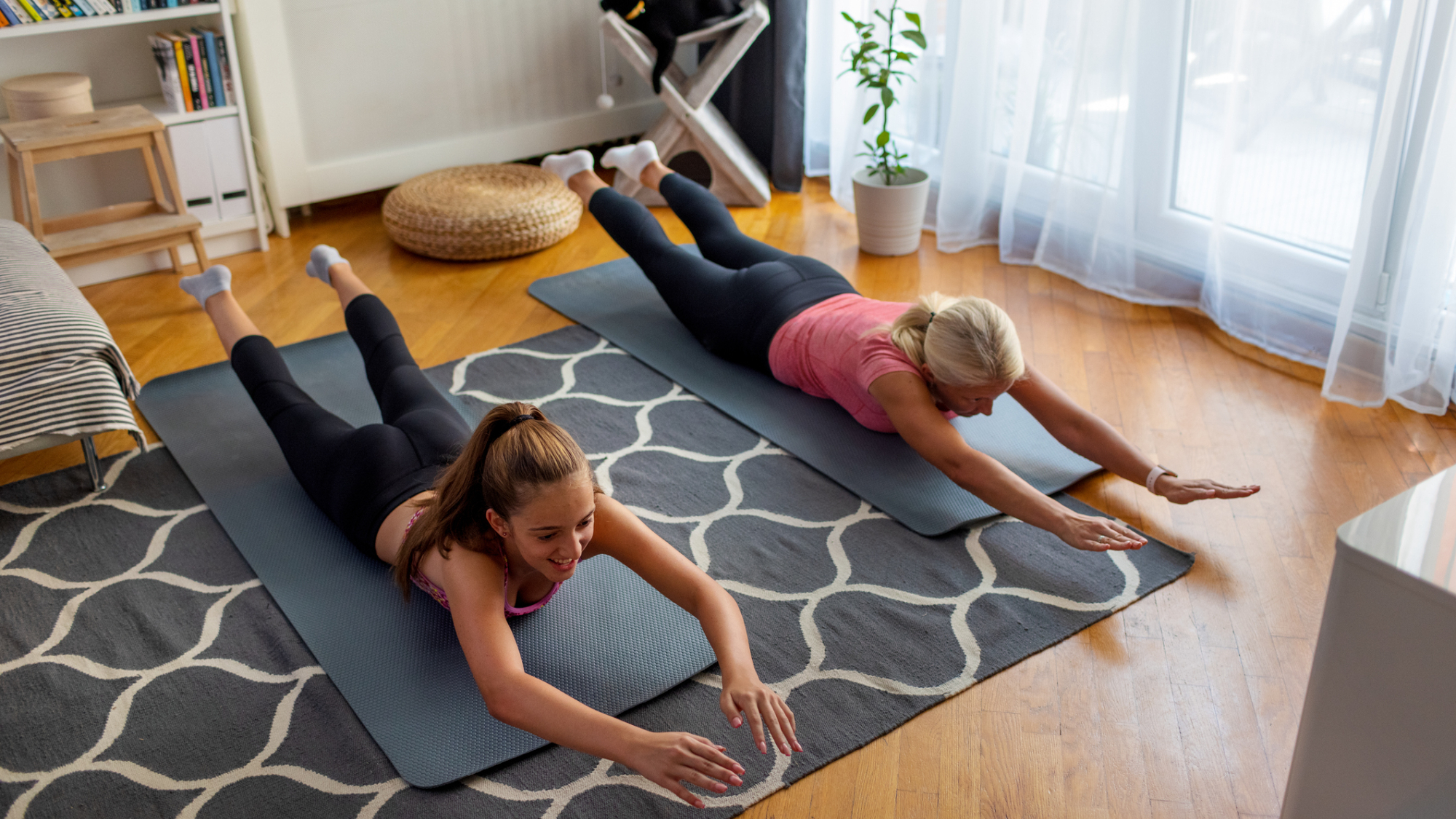
Sets: 2 Reps: 10
- Start lying face-down on the ground with your arms and legs extended.
- Keeping your arms and legs straight, raise all four limbs as high as you can. You should be looking at the floor throughout.
- Lower your arms and legs back to the ground, then repeat.
Modification: To make this exercise more challenging, hold the top position for three seconds on each repetition.
3A. Side plank dip
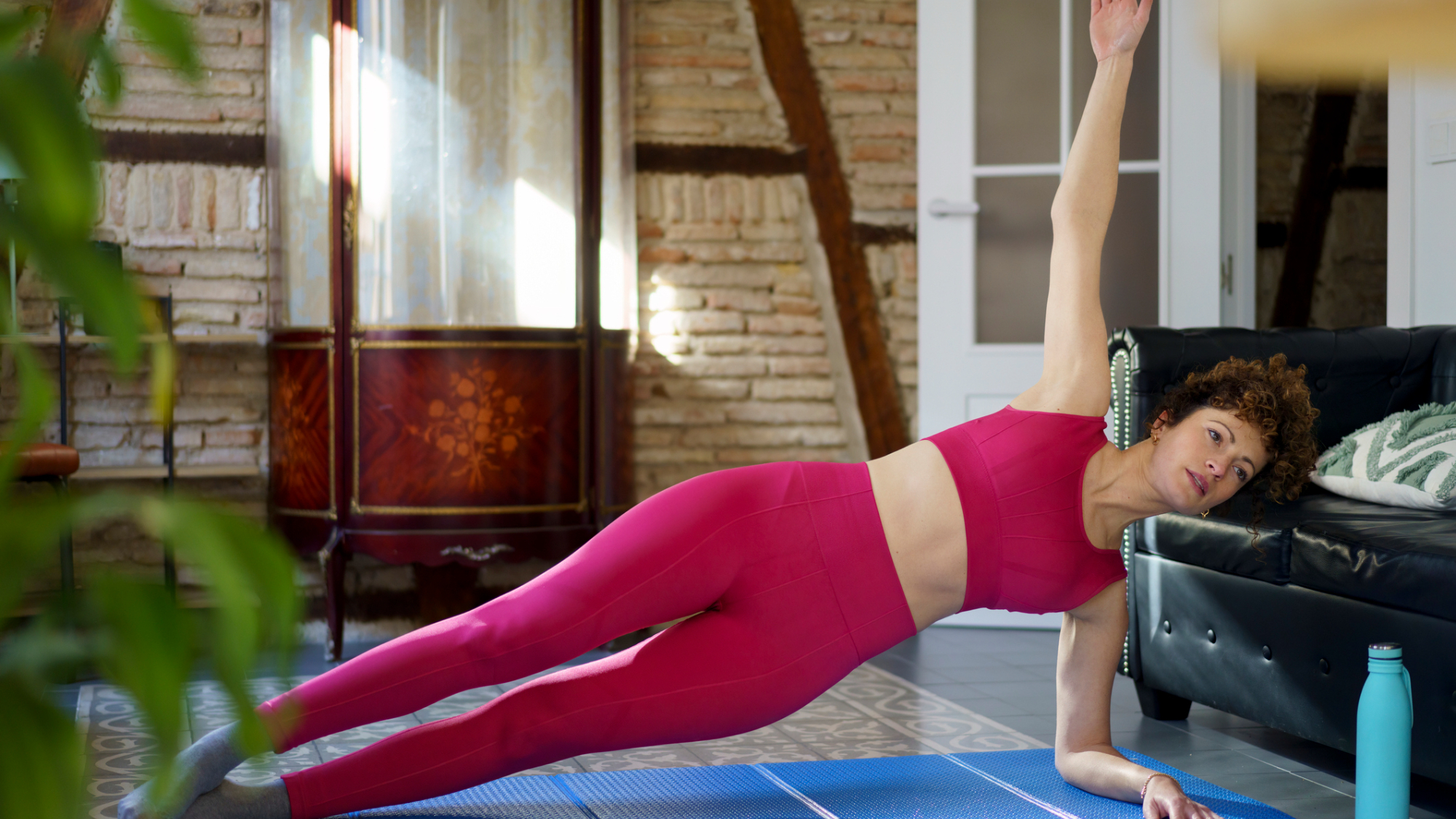
Sets: AMRAP Reps: 10 on each side
- Start in a side plank position (pictured above) with your weight spread between your right forearm and the outside of your right foot.
- Keeping your stomach facing forwards, lower your hips towards the floor.
- Tighten your core to return to the side plank position.
3B. Single-leg glute bridge

Sets: AMRAP Reps: 10 on each side
- Lie on your back with your knees bent and pointing upwards, and your feet flat on the floor. Keeping your thighs level with one another, straighten your left leg.
- Squeeze your glutes (backside muscles) and drive your hips upwards until your torso and left leg form a straight line.
- Lower your hips back to the ground then repeat for the prescribed number of repetitions, then switch sides.
Modification: To make this exercise more difficult, you can place your planted foot on a sturdy elevated surface like a couch.
3C. Squat
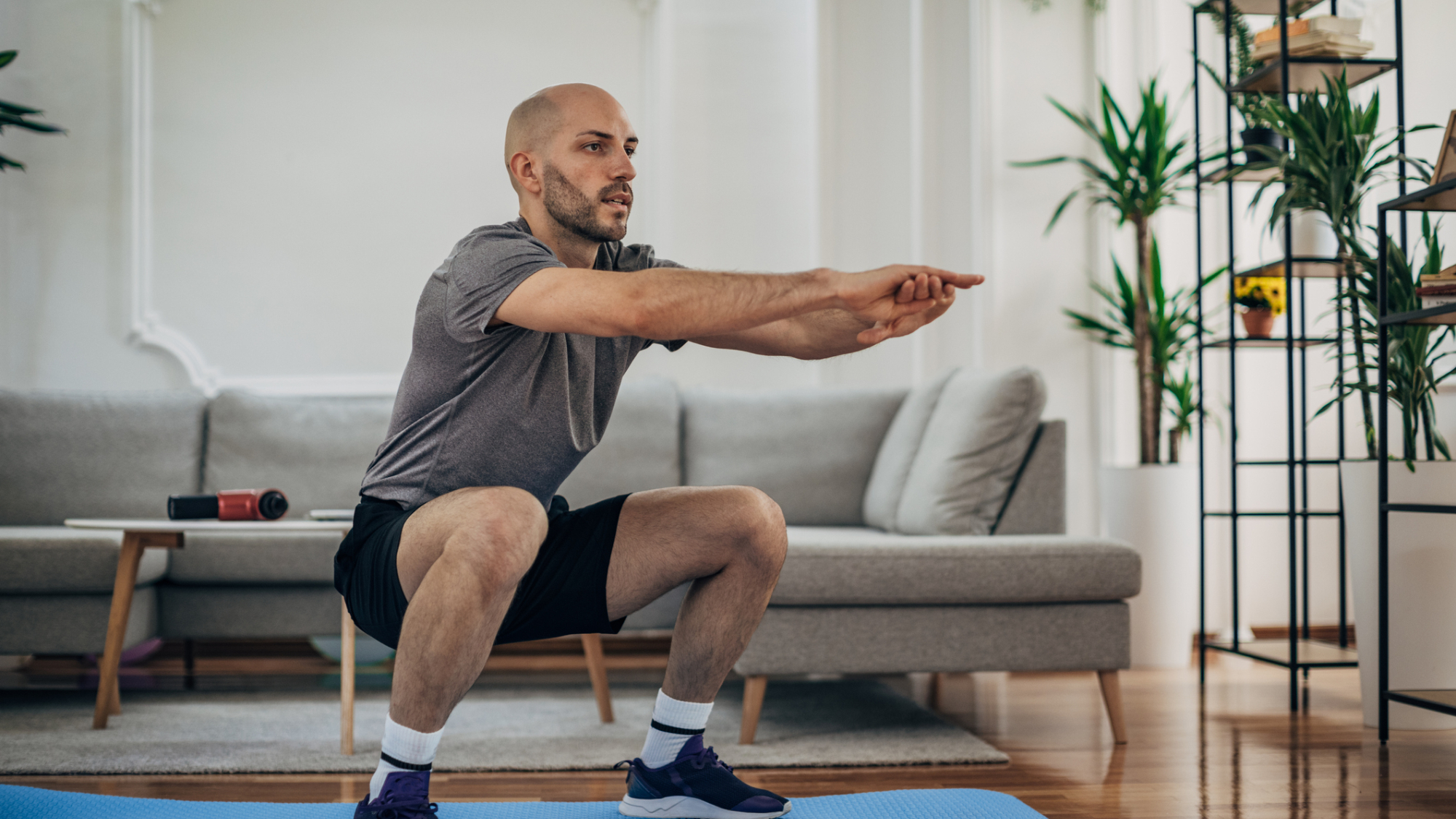
Sets: AMRAP Reps: 15
- Stand with your feet slightly wider than hip-width apart and your toes pointed outwards slightly.
- Push your hips back and lower them towards the ground as if you were sitting down into a chair behind you. Keep your chest proud and your back flat as you do this. Lower your hips until your thighs are parallel with the ground, or lower if you can.
- Drive through your feet to return to a standing position, then repeat for the prescribed number of repetitions.
Modification: You can hold a dumbbell or kettlebell in front of your chest to make this exercise more difficult—this is called a goblet squat.
Benefits of Sally Moss's strength training workout
As you'd expect from the name, the main benefit of strength training is that you'll build strength. But it won't just strengthen your muscles; your bones, joints and (less tangibly) even your mindset can be bolstered.
As a result, your mobility will improve and your chance of injury will decrease. And, as this is a full-body workout, you'll hit a bit of everything for some comprehensive muscle-building.
Moss's use of a superset format will also raise your heart rate, leading to elevated calorie burn and a cardio-boosting bonus.
Beyond this, developing your muscles through strength training can also lower blood sugar, improve balance and posture and reduce stress, according to the Harvard Medical School.
You can even use strength training exercises for weight loss. This is because muscle is a metabolically active tissue that takes energy to maintain and grow, so the more you have, the more calories you'll burn at rest.
Strength training tips from Sally Moss
1. Form is key
"Good form is key to making the exercise effective, so make sure you understand how to perform each move," says Moss.
This will make sure you're engaging the targeted muscles and lifting safely, minimizing your risk of injury while maximizing strength and muscle growth.
2. Use full-body workouts to begin with
"When you're starting out, full-body workouts are more effective than training different areas on separate days. This is because the muscles get the stimulus of training more often, meaning you will make faster progress," Moss explains.
For example, if you do two full-body workouts a week then you'll train each major muscle group in your body twice.
However, even if you train six times per week while dedicating a day each to your legs, arms, shoulders, chest, back and core, you'll still only work each one on one occasion.
3. It has to be challenging
If you want to build strength, you have to challenge yourself—this is the foundation of the progressive overload principle.
When you first start strength training, it's likely this will be possible with most bodyweight exercises. However, as you grow stronger, you may want to add progressively heavier weights to some exercises (particularly those focusing on larger muscle groups like the legs) to increase their difficulty.
"You don't need any equipment to strength train at home, but a few items can go a long way," says Moss.
"A set of resistance bands and a pair of dumbbells or kettlebells will allow you to make a lot more progress, and are easy to incorporate in the home."
Need some helping choosing your next set of weights? Our guide to the best adjustable dumbbells can help







